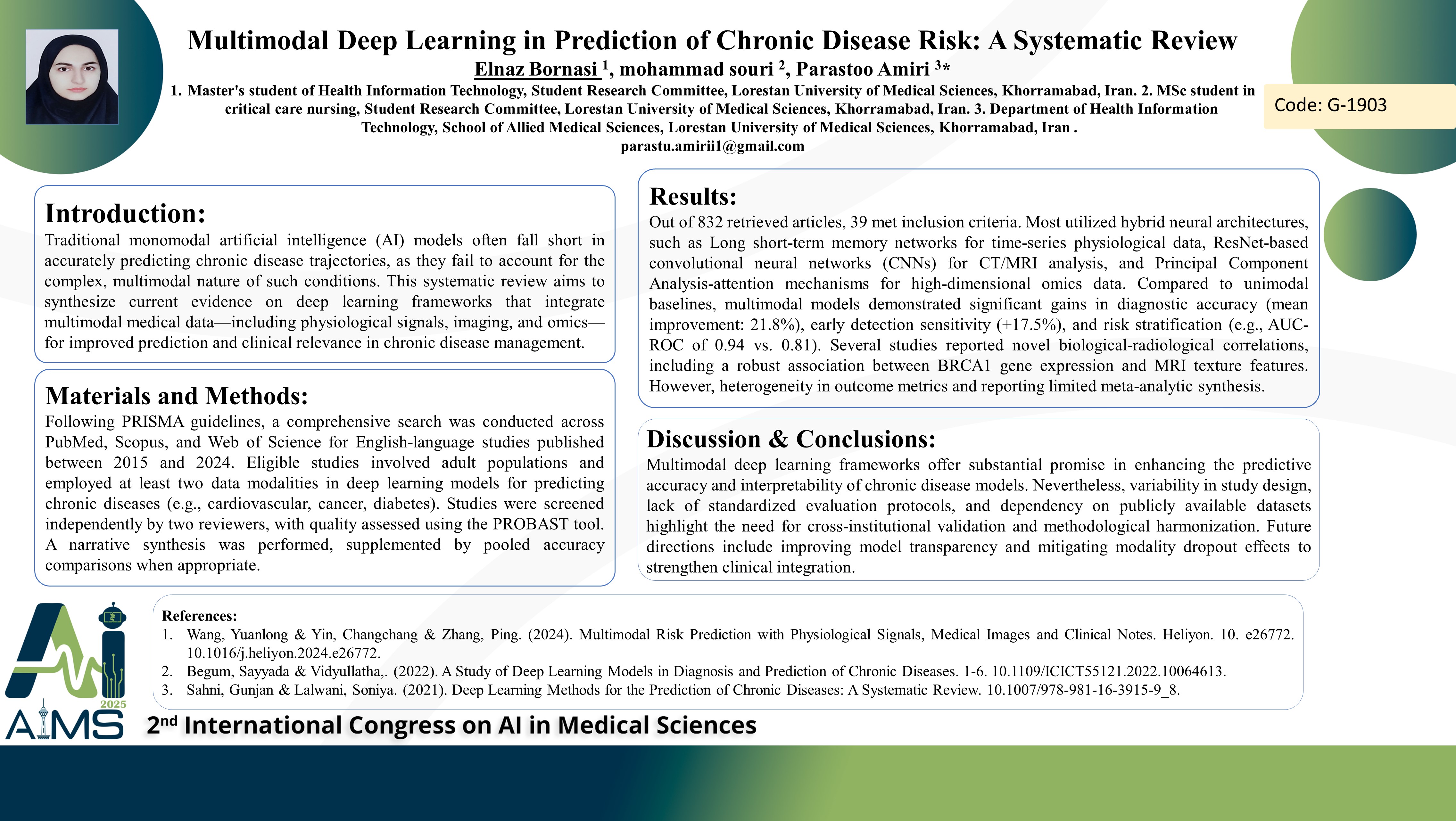یادگیری عمیق چندوجهی در پیشبینی خطر بیماری مزمن: مروری سیستماتیک
کد: G-1903
نویسندگان: Elnaz Bornasi ℗, Mohammad Souri, Parastoo Amiri *
زمان بندی: زمان بندی نشده!
برچسب: یکپارچه سازی داده ها
دانلود: دانلود پوستر
خلاصه مقاله:
خلاصه مقاله
Background and aims: Traditional monomodal artificial intelligence (AI) models often fall short in accurately predicting chronic disease trajectories, as they fail to account for the complex, multimodal nature of such conditions. This systematic review aims to synthesize current evidence on deep learning frameworks that integrate multimodal medical data—including physiological signals, imaging, and omics—for improved prediction and clinical relevance in chronic disease management. Method: Following PRISMA guidelines, a comprehensive search was conducted across PubMed, Scopus, and Web of Science for English-language studies published between 2015 and 2024. Eligible studies involved adult populations and employed at least two data modalities in deep learning models for predicting chronic diseases (e.g., cardiovascular, cancer, diabetes). Studies were screened independently by two reviewers, with quality assessed using the PROBAST tool. A narrative synthesis was performed, supplemented by pooled accuracy comparisons when appropriate. Results: Out of 832 retrieved articles, 39 met inclusion criteria. Most utilized hybrid neural architectures, such as Long short-term memory networks for time-series physiological data, ResNet-based convolutional neural networks (CNNs) for CT/MRI analysis, and Principal Component Analysis-attention mechanisms for high-dimensional omics data. Compared to unimodal baselines, multimodal models demonstrated significant gains in diagnostic accuracy (mean improvement: 21.8%), early detection sensitivity (+17.5%), and risk stratification (e.g., AUC-ROC of 0.94 vs. 0.81). Several studies reported novel biological-radiological correlations, including a robust association between BRCA1 gene expression and MRI texture features. However, heterogeneity in outcome metrics and reporting limited meta-analytic synthesis. Conclusion: Multimodal deep learning frameworks offer substantial promise in enhancing the predictive accuracy and interpretability of chronic disease models. Nevertheless, variability in study design, lack of standardized evaluation protocols, and dependency on publicly available datasets highlight the need for cross-institutional validation and methodological harmonization. Future directions include improving model transparency and mitigating modality dropout effects to strengthen clinical integration.
کلمات کلیدی
Multimodal Data, Deep Learning, Chronic Disease
